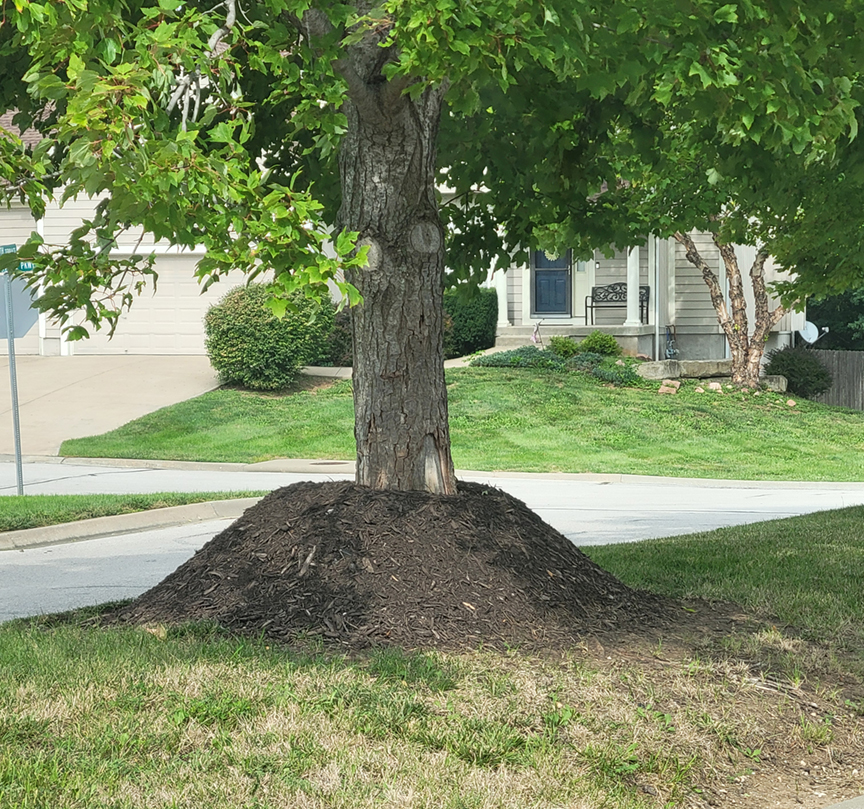Mulch-Volcanos 
Pick any neighborhood in the metro. Drive down the road and look at the street trees on either side. Chances are, you will see a giant pile of mulch at the bases of the trees. It is so widespread that someone uninformed of tree care might start to think this is the normal way to mulch the base of trees. There is conclusive evidence that there are better ways to apply mulch to any tree than this one.
In the horticulture world, this mound of woodchips would be called a "mulch volcano." And as mentioned before, they are everywhere in the Kansas City area, especially in the suburbs. Why does this happen? There are several reasons why people and companies have their motivations and justifications. It doesn't matter what the reasons are because it's wrong.
Mulch against the trunk of the tree can lock in moisture. A conducive environment, a virulent pathogen, and a susceptible host are the three factors that make up the plant disease triangle. That means when all three are present, it's just a matter of time before disease infects the plant. There is no telling what spores are located in the mulch or what spores can blow in from the surrounding area, but you can bet they are present. Some trees are specifically selected for resistance to a particular disease; however, this does not mean those trees are immune from all diseases. If we know there are pathogens in the mulch and surrounding environment and trees are susceptible hosts, mounding the mulch against the tree trunk provides a conducive environment for this disease.
The disease is one of many troubles caused by fifteen inches of mulch against the bark. If the mulch is too thick, water infiltration and oxygen availability also become issues. As mulch breaks down, it will become compacted and hydrophobic. This can lead the tree to grow additional roots into the mulch for water and air. Since the mulch is now hydrophobic, the roots might not find any water and could dry out.
Roots searching for resources could lead to another issue as well. Stem girdling roots. When roots grow close to the trunk and proceed to wrap around the trunk, they increase in diameter along with the trunk. This simultaneous expansion leads to the roots cutting off the vascular system to the stem. Signs of stem girdling roots can be seen at the tree's base, provided you can see it. Another sign is when a tree appears to be leaning. Stem girdling roots can be corrected on a young tree. Big mature trees, on the other hand, cannot be corrected.
If the tree is experiencing a lack of water, lack of oxygen, mouse chewing, and some disease pressure, those all contribute to the stress the tree is facing. This stress signals insects who want to feed on the tree. The best defense against insects is for the trees to remain healthy. What isn't healthy for trees? Heaps of mulch piled at the base of the tree.
So, what is the correct method of mulching? 2-4 inches of even level mulch spread 3- 5 ft atop the surface roots. Mature trees should have a well-defined and visible root flare or where the tree meets the soil. Young trees might not have a well-defined root flare and might need to have the mulch pulled away from the tree trunk. The finished shape of your mulching efforts should resemble a flat doughnut.
by Markis Hill, Horticulture Ornamentals and Turf Agent, 2024